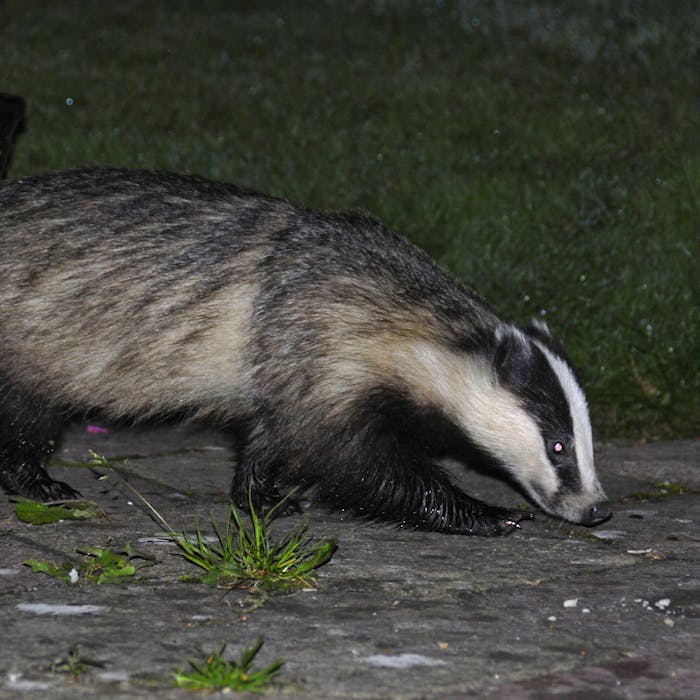
The badger - Britain's largest predator!
With its characteristic black and white-striped face, grey fur and short furry tail, the badger looks like no other UK mammal. Stocky, powerfully-built creatures, they typically weigh 10–12kg, with a body length of about 90cm. This makes them the biggest land predator in the UK.
Badgers are found across the UK, with the highest numbers in southern England. Ideal badger habitat is a mixture of woodland and open country.
The species lives in a network of underground burrows and tunnels know as a sett. Each badger territory will include a main sett and several smaller outlying setts. The main sett is the group’s headquarters, where they spend most of their time and rear their young. Outlying setts are smaller and provide a safe place to retreat to if needed when badgers are out foraging. Setts tend to be located in the shelter of woodland, with the badgers emerging at night to forage in fields and meadows.
Though not as common as urban foxes, badgers can also survive in towns and cities, providing there is suitable cover in which to dig their setts, and nearby gardens and parks where they can hunt for food. They are nocturnal foragers.
Badgers eat a wide range of food. Around 80% of a badger’s diet is made up of earthworms – they can eat hundreds of them in a single night – but they also eat slugs and other invertebrates.
Fruit features in the badger's diet too, including pears, apples, plums and elderberries. Elder bushes can often be found growing near badger setts. When earthworms are scarce, badgers will eat small mammals like voles and rabbits. They are also the main predator of hedgehogs in the UK. Badgers locate food using their keen sense of smell and sharp claws that are ideal for digging.
Badgers are fully protected by law. This has helped the UK population to grow, roughly doubling since the 1980s. However, many badgers are killed by cars and illegal persecution does still occur.
There are also concerns by some that badgers are responsible for spreading bovine tuberculosis to cattle. This has led to badger culls taking place in certain areas.
Further reading
Links to external websites are not maintained by Bite Sized Britain. They are provided to give users access to additional information. Bite Sized Britain is not responsible for the content of these external websites.
